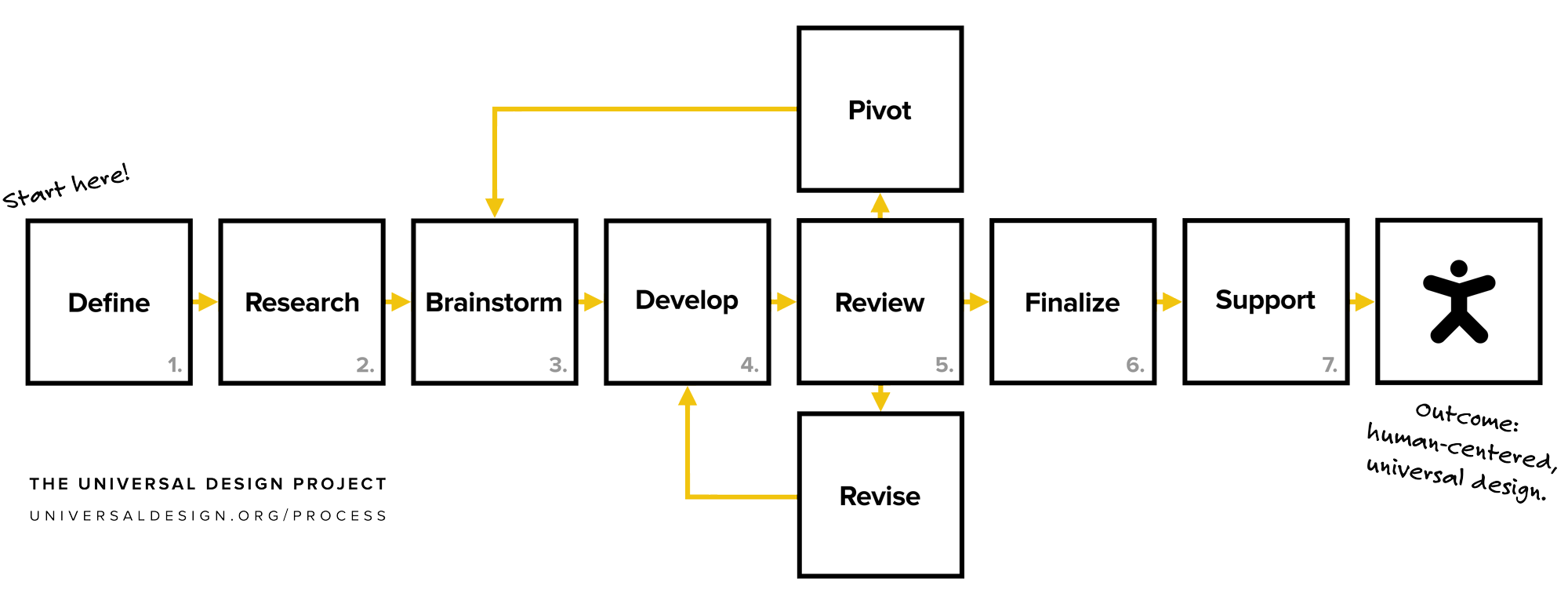TAKE THE CHALLENGE:
INCLUSIVE PLAY: DESIGNING GAMES FOR ALL
The Issue:
Why do you game? Some play for fun, some play to learn, and some play to connect with others. For people with disabilities, games can do even more: they can be tools for therapy, provide pain relief and can increase independence, socialization, and empowerment. But games are not always designed with people with disabilities in mind. Applying “Design for All” principles to game design can be a catalyst for innovation, not a constraint, and lead to new awesome games that can be played by everyone.
The Game Design Prompt:
Let’s elevate the gaming experience and make it more accessible than ever. Your challenge is to design a game for all players and break down barriers that can prevent some players from accessing or enjoying gaming. Apply Universal Design methods when designing your game (with a focus on software features), so that it can be played by people who have one or more types of disabilities, such as visual (blindness or low vision), auditory (deafness, hard of hearing), speech (loss of difficult to understand) or cognitive and learning disabilities (difficulties with attention, memory, language processing, reading, reasoning, etc.). Also, including characters and features in the game that depicts an inclusive environment. When we design in a more inclusive way, we can create a more positive gaming experience for everyone.
75% of the US population is a gamer.
Roughly 20% of the US population has a disability.
75% of the disabled community is made up of those with some form of motor disability.
Over 60% of adult gamers use accessibility options even if they don’t have a need for them (on PC).
What is Universal Design?
Universal design is a term that applies to design that is usable by all people, to the greatest extent possible, without the need for adaption or specialized design.
Who benefits from Universal Design?
Everyone (all people) but especially people affected by disability. Importantly, ‘disability’ is part of the human experience (not just a category of the population); age, illness, injuries, or health conditions can affect how well (or not well) our bodies function.

STEP 1 |
DEFINE
Identify a problem; outline the constraints; explain the objective.
STEP 2 |
RESEARCH
Discover issues to address from people who are affected by a disability.
STEP 3 |
BRAINSTORM
Come up with possible solutions. Generate a list of ideas. The more the better.
STEP 4 |
DEVELOP
Now it’s time to select a single idea. Create a visual sketch or prototype of your game.
STEP 5 |
REVIEW
Present your work to your teacher or mentor. Get all the feedback you can about your idea, the usability and concept.
STEP 6 |
FINALIZE
Time to put the finishing touches on the solution. Design your game for players’ use.
STEP 7 |
EVALUATE
Include your user audience. Get support from game players with disabilities. Evaluate the game with a diverse group of players, and make modifications based on feedback. Provide ways to collect input from players (e.g., online surveys, game testing).
Video games are for everyone. But those with disabilities can be left out if developers don’t consider their needs. This series of videos shares guidelines and best practices for making games more accessible to a wide range of disabilities.
Designing for Disability | Episode 1: Auditory
Designing for Disability | Episode 2: Visual
Designing for Disability | Episode 4: Cognitive
Designing for Disability | Episode 3: Motor
Credit: Mark Brown, creator of Game Maker’s Toolkit.
AbleGamers: AbleGamers is a nonprofit organization whose mission is to improve the overall quality of life for those with disabilities through the power of video games and is dedicated to creating opportunities that enable play, in order to combat social isolation, foster inclusive communities, and improve the quality of life for people with disabilities.
Accessible Games: Through the Accessible Games website, AbleGamers provides standards for making games accessible to people with visual, physical, auditory, and cognitive disabilities.

Game Accessibility Guidelines: Offers examples and advice on how to structure video games for people with disabilities. Developed by gaming studios and academics.
Website: gameaccessibilityguidelines.com
© Copyright Games for Change 2025